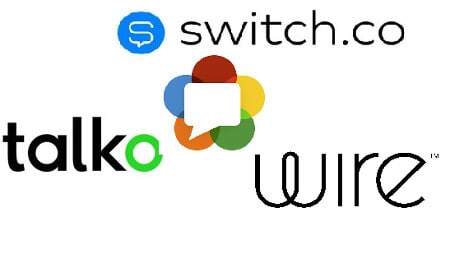It isn’t about WebRTC. It is about how it assist us in achieving new means of communications.

There have been some interesting announcements of new communication apps over the last month. All single word names. All related to WebRTC in one way or another. All impossibly hard to build without WebRTC.
Talko
Talko is a high profile startup. Having Ray Ozzie as the founder and CEO should make things a bit easier there.
Talko is trying to re imagine what voice calls needs to be. Focusing on group chat, image sharing and the ability to switch seamlessly between real time interactions to recorded/played ones. This one is definitely aiming at the business market once it gets all of the bits and pieces in place.
The focus at the moment is voice only, mobile first, with only an iOS app available.
WebRTC is a technology used by the Talko team to get what they need as part of their app.
Wire
Wire is another high profile startup. Launched just last week with Janus Friis, a Skype co-founder.
Wire has voice calling, images, text chat, SoundCloud and YouTube sharing. Focus is a new UX design for communication services.
Wire has iOS, Android and an OS X app. It also uses WebRTC as its underlying technology.
Purchasing that domain name probably cost them a kidney.
Switch
Switch comes from Craig Walker, who sold GrandCentral Communications to Google and founded UberConference. While it launched earlier this year, it is worthwhile noting here.
Switch tries to add voice to Google Apps and do so by adding context to calls, making them easier to handle.
It has the features expected from a boring enterprise phone service, with a lot of added benefits that resemble how Rapportive worked pre LinkedIn days.
Switch runs on iOS, Android and the desktop. It uses WebRTC.
Why is it important?
People still ask me are there any real commercial deployments of WebRTC. People look for some kind of an affirmation that this technology is solid. The idea is that if it isn’t supported on IE and if Apple doesn’t endorse it, it can’t exist.
These are different than the messaging platforms that are refocusing in becoming ecommerce platforms. These new services are about pure communication – in ways that aren’t obvious.
To build the services above takes time. The companies here plunged early on in the game, taking a risk. Doing this without having something like WebRTC would have taken more time and considerably a lot more money. This is what WebRTC enables – reducing the barrier of entry for developers. Having a desktop angle to it? Consider this the icing on top, or just another reason to go WebRTC.

Great article that shows WebRTC is a great tool. I’m also curious to see Fone.do from Moshe Maeir in Israel. Seems to be a trend in these collaborative phone systems that should replace old fashioned solutions (that are hardware based and expensive). Expect APIdaze to play in this arena soon 🙂